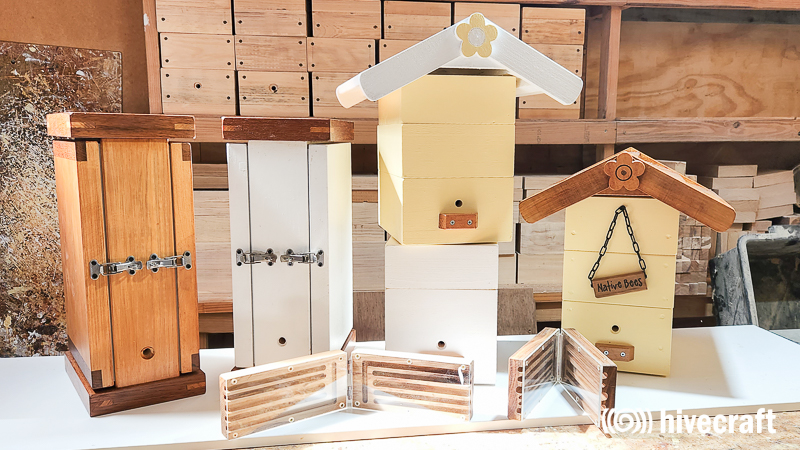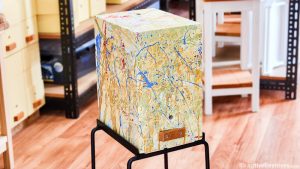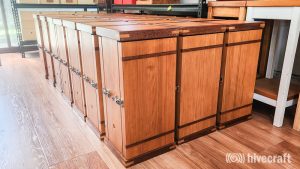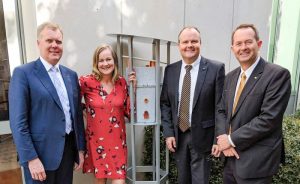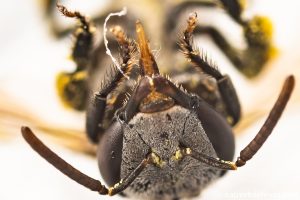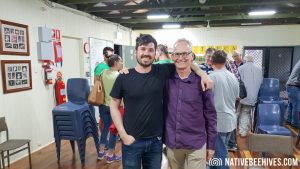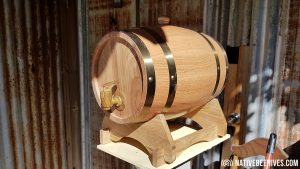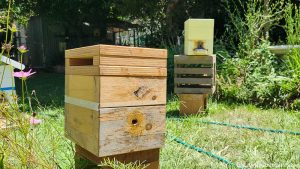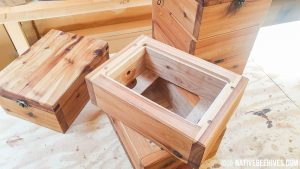Stingless Bees can create their honey pots everywhere within the hive but it’s commonly thought they will store their honey further away from the entrance, and place Pollen nearer the entrance. (See photo below that displays this)
For “optimum” pure honey it is best to eliminate Pollen from the honey harvesting process.
*Now i’m sure we’re not breaking new ground here and some of this info wont be anything new to the very experienced. I just didn’t have the info on this site yet so just out of interest i’ll do a few trials over time and add info and photos to this article.
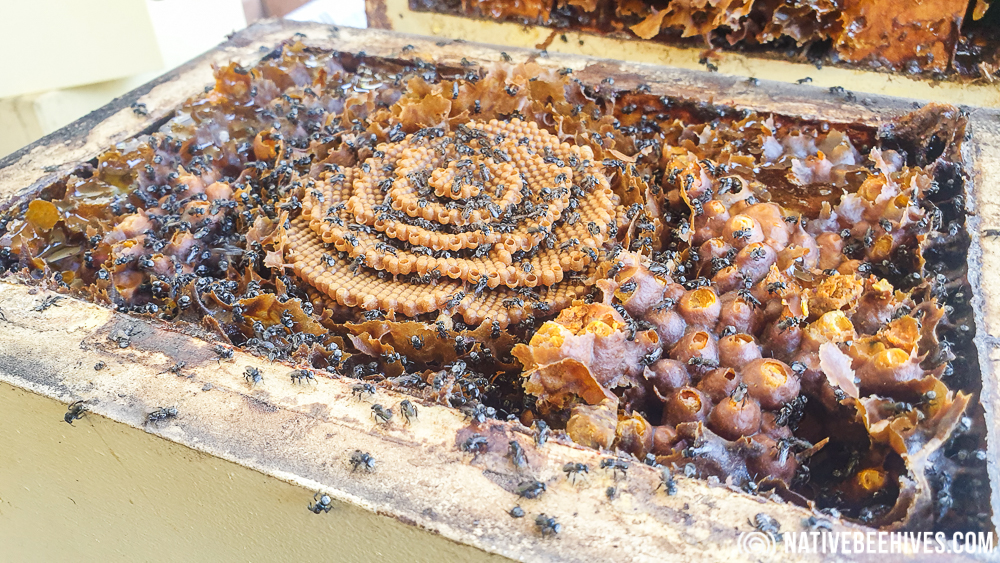
I thought i’d try a number of different designs for honey storage and collection.
1. Standard Honey Super
This design has been used in the industry for many years. Maybe the most simple design is the best in the long term, but we’ll always be tinkering trying to make improvements. Access to the top Honey Super frame is via a small hole at the rear of the Separator plate.
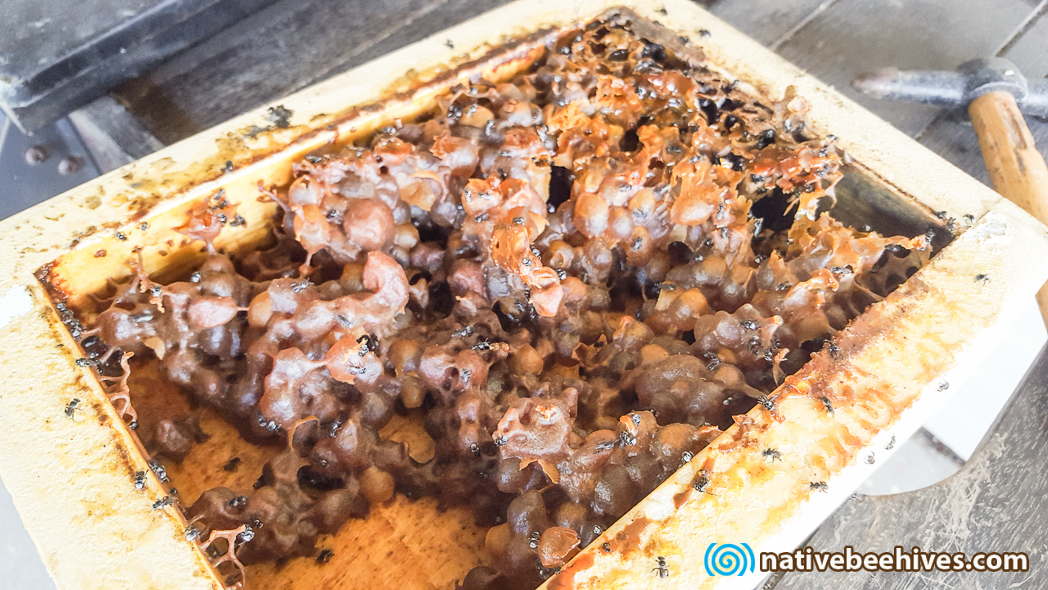
2. The Honey Pot – Jar Design
Being at the top of the hive this is further away from the entrance. We may expect more pollen in the front jar and more honey in the rear jar.
Just out of interest I’ll just compare the distribution of Honey and Pollen Pots between the jars and maybe the speed at which they fill. I have two hives set up with these triple honey jars. The Honey Jar idea is only intended for sampling honey and not for large harvesting of honey. These Honey Jars are usually used just as a single jar on the Goodrich designed box
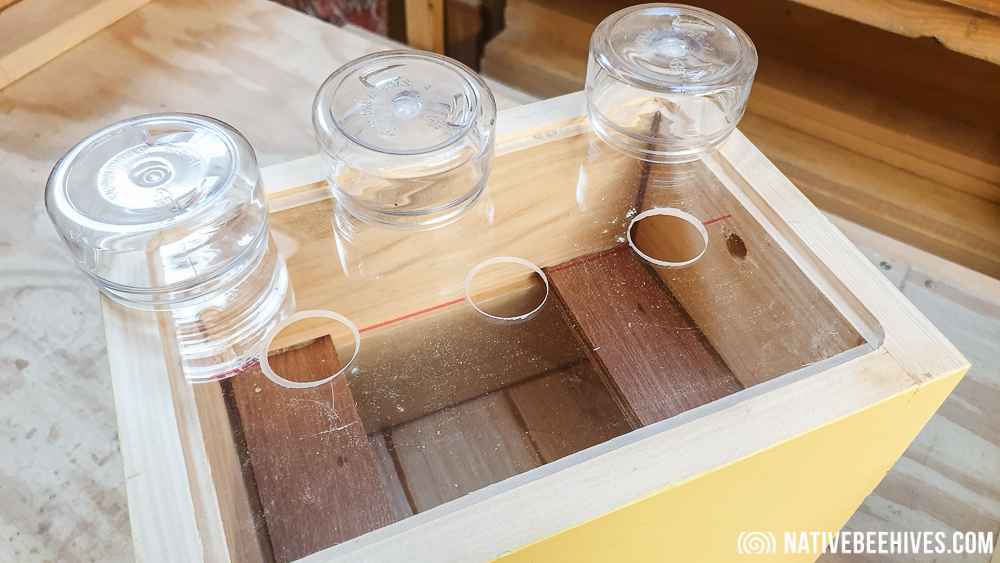
Below: The middle frame on with the clear window and three holes for the small jars. I will wait until the frame has been built out by the bees before adding the jars on top.
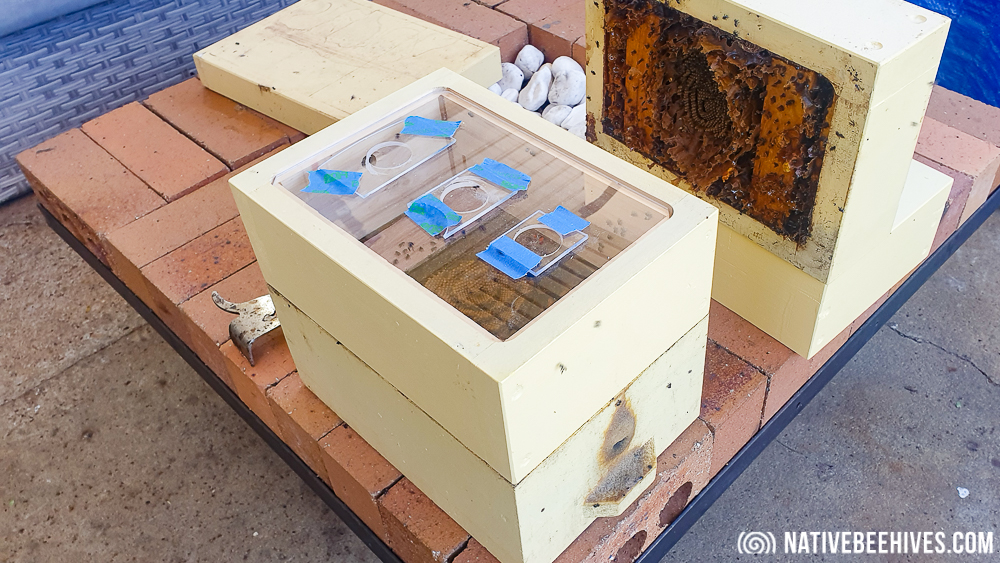
Update Below: 12/04/2022
My simple honey jar trials… I set up two hives with three honey jars on each. The idea was to check the ratio of pollen vs honey from front to back jars. I’ve seen people say the jars get too much pollen in them so I thought I better try it out.
“Hive 1” was a full strength colony when the jars were added. After six months, all jars were full with honey pots and looks like more honey in the front jar, no pollen at all anywhere. This gave me some very clean honey.
“Hive 2” was a recent split when the jars were added. The bees largely ignored the jars and then started filling them with propolis. So don’t give bees access to the jars or your normal honey super until the colony is full and strong.
Honey jars aren’t designed for full on honey harvesting, they are a simple way to get a honey sample. It’s not a bad way to give your visitors or kids a sample of honey straight from the hive without disturbing the colony too much.
Hive 1. Image below: These jars were added to a full strong colony. The right one is the jar that was at the front of the box and appears to have the most amount of honey. None have any pollen.
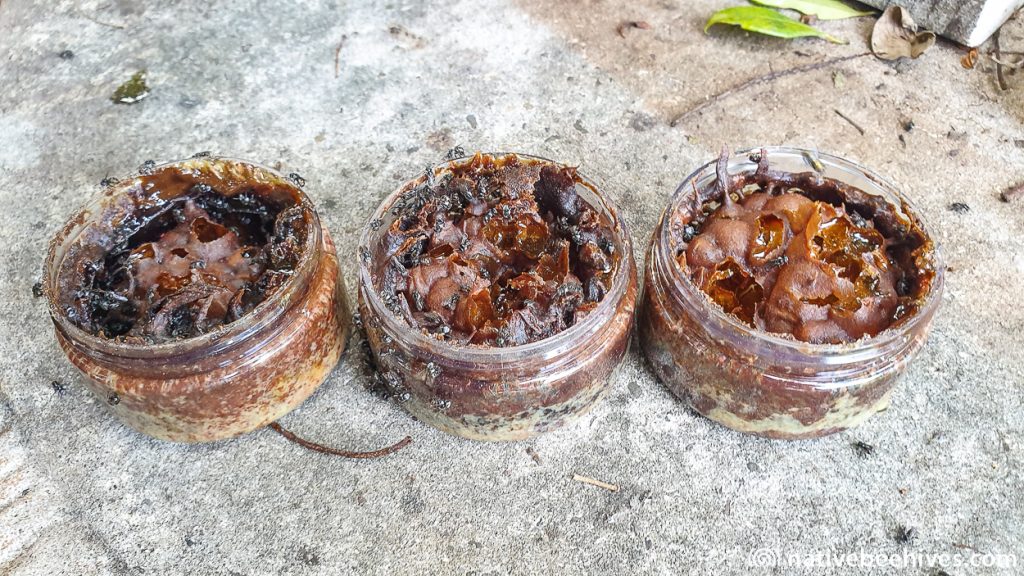
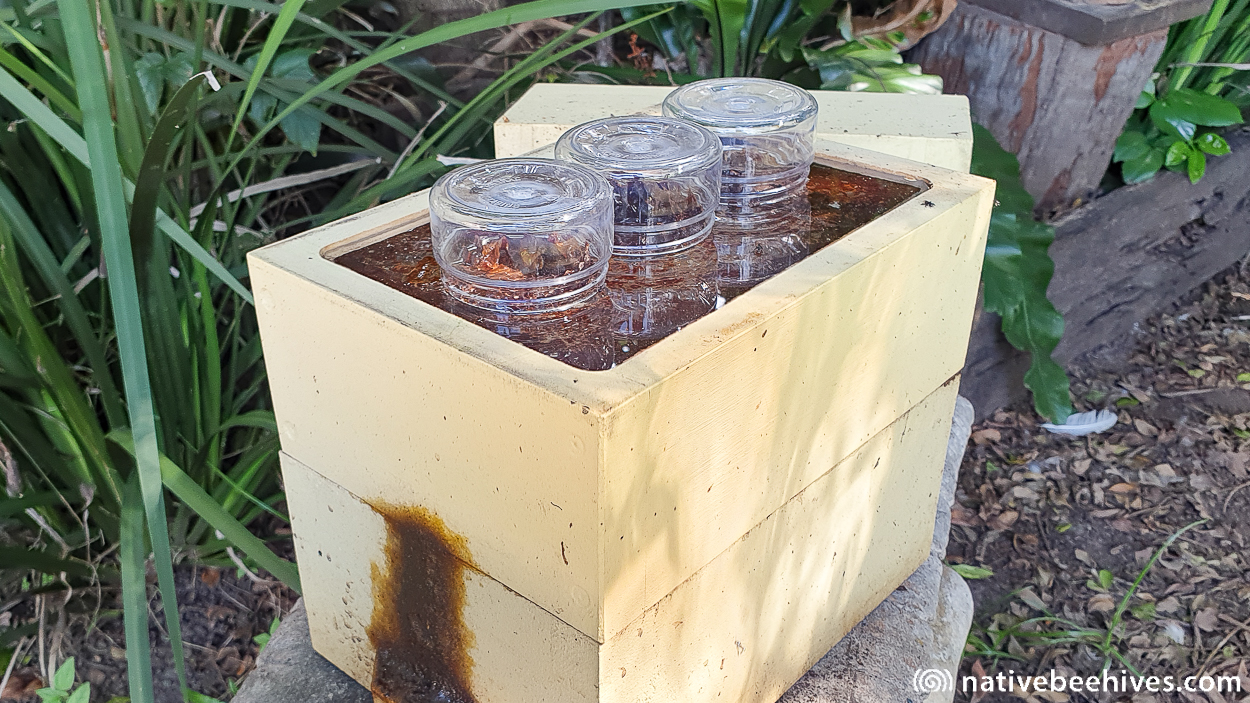
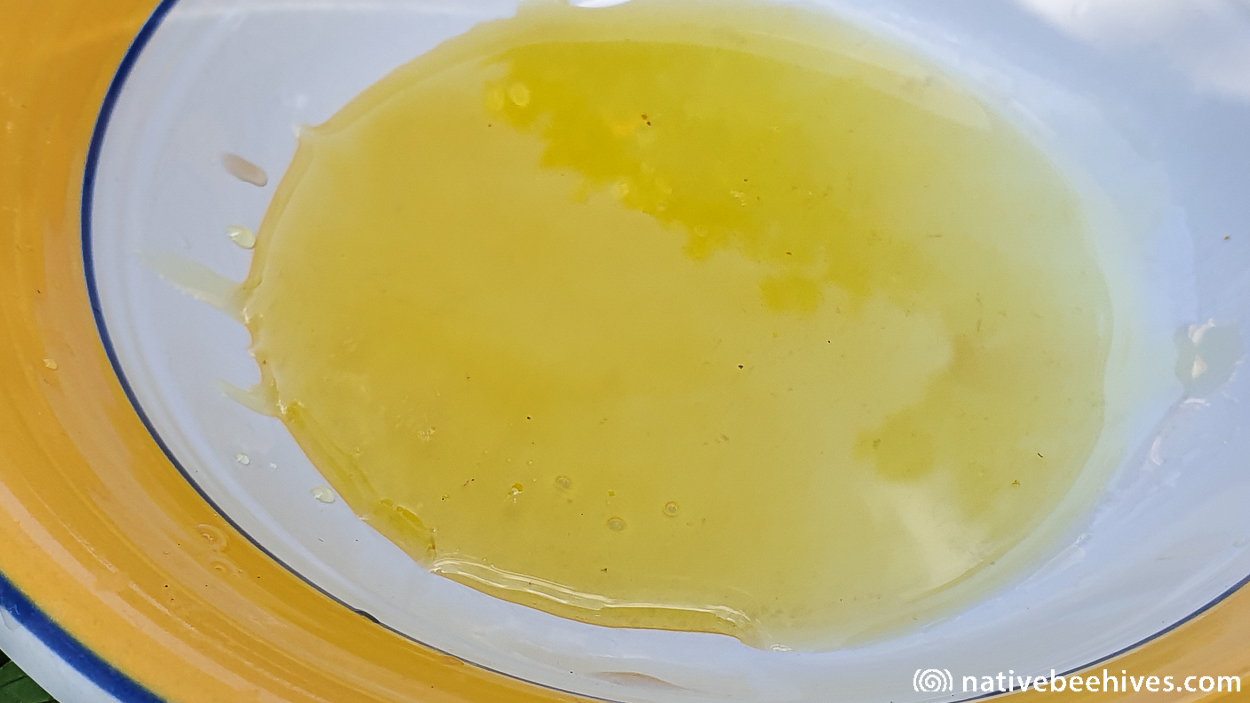
Hive 2. Jars added to recently split colony are ignored for a while or a fair bit of propolis is added.
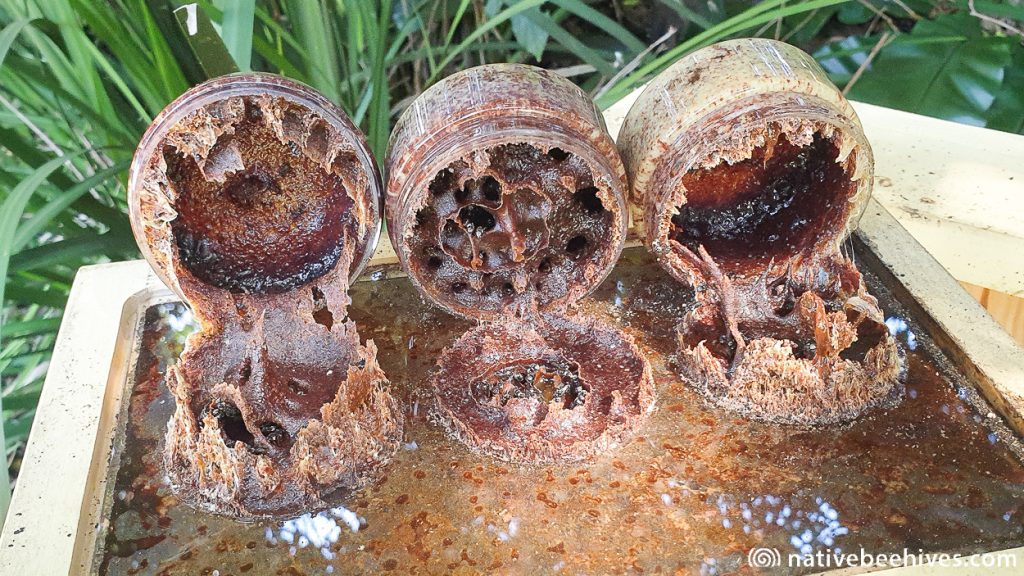
3. Slim Frame Honey Super
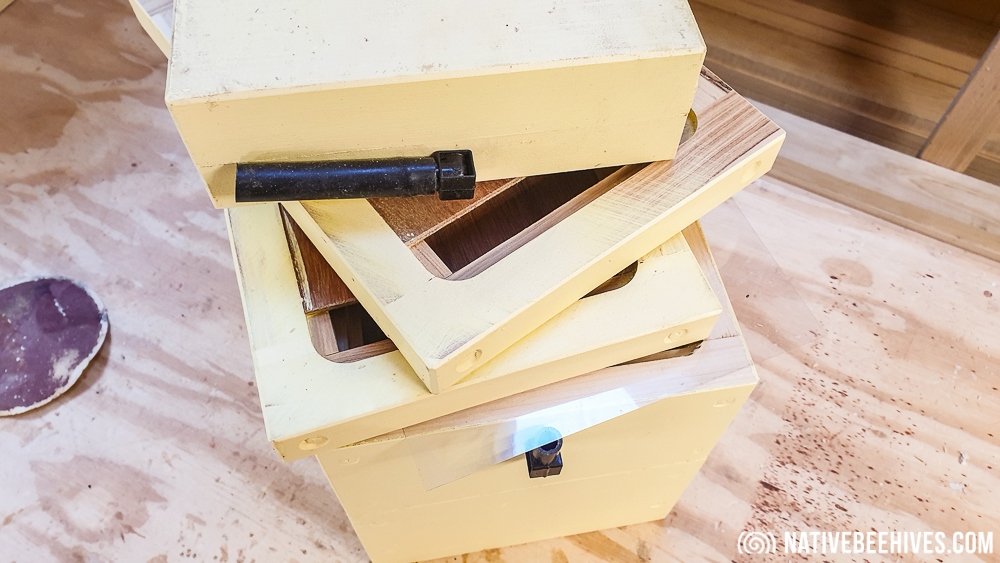
I have been using the slim frames for a while now and they seem to work pretty well. The design is from Doug Irvine and Nick Powell. Usual access is internal, similar to the standard OATH Honey Super.
Mitch from Central Highland Native Bees is doing some trials using Slim Frame Supers attached to the front of a hive box like a Budding/Eduction to see if the bees will use it as a storage area for Honey Pots. They wont create a new colony in that area because it’s too small. Mitch is also doing some trials on the Slim Frames in different configurations, so i thought i’d have a try as well.
4. Externally Piped Super
One advantage of an external frame for honey collection is that it can be disconnected from the main colony without disturbing the colony or causing any damage to the structures. You could unplug these frames, remove them and plug in new frames in straight away.
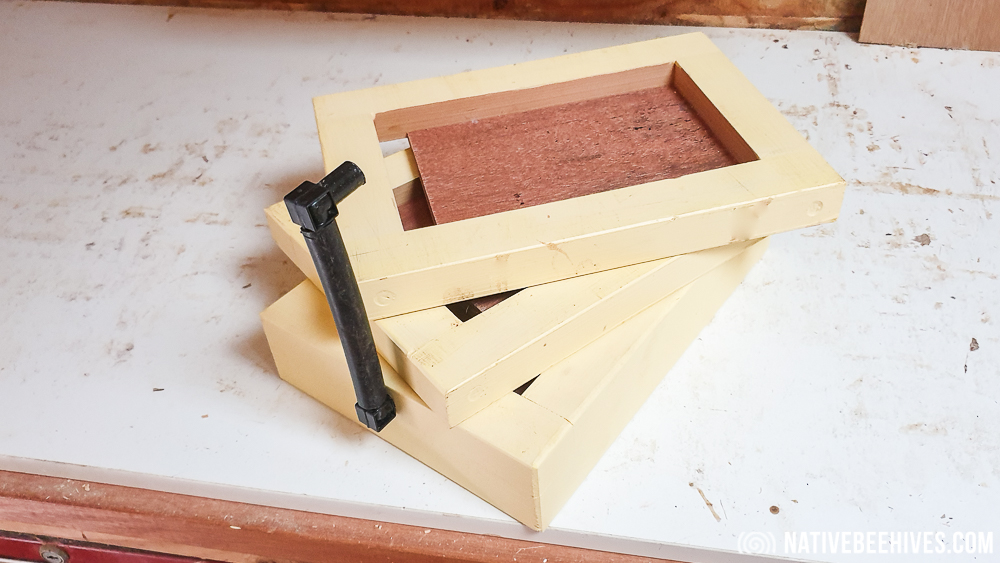
Photos above: Slim frames placed on top of hive and access is via an external tube.
Photo below: 50mm high external, 40mm internal volume, externally piped. Testing at the moment – 2023
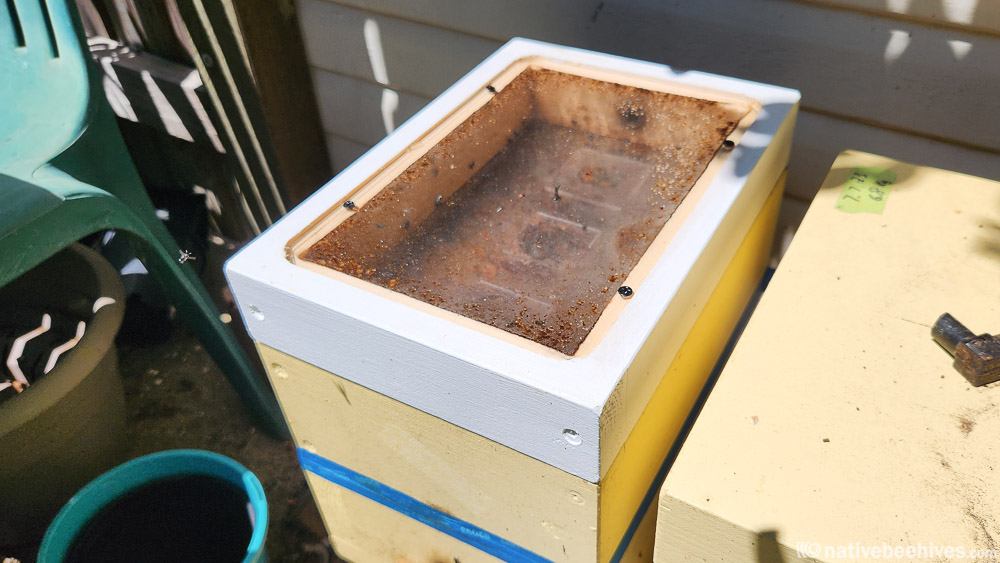
5. Open Top Super Frame with clip lid
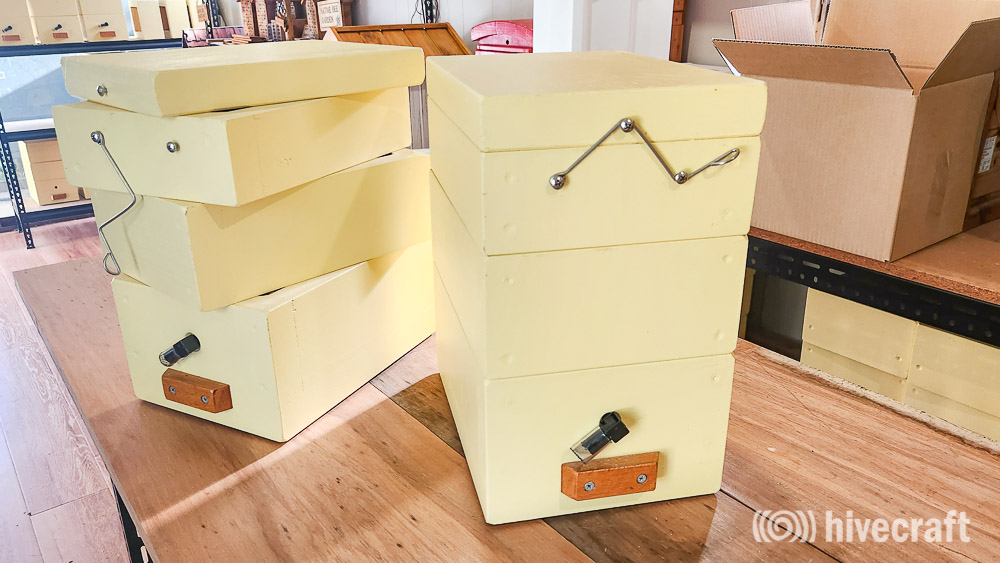
6. Got a suggestion? Your design here?
Contact Page: https://www.nativebeehives.com/contact/

